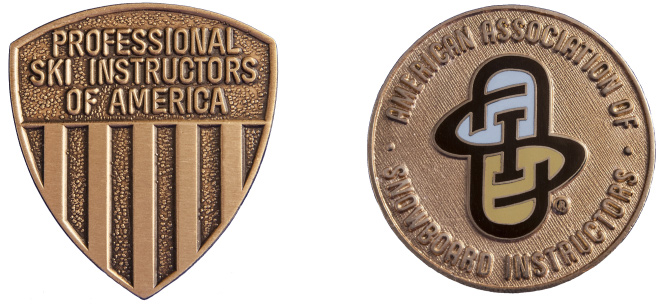While watching the 2018 Winter Olympics in PyeongChang, South Korea viewers can apply takeaway tips from the Slalom races to improve their own skiing. According to 32 Degrees, The Journal of Professional Snowsports Instruction for the Professional Ski Instructors of America and American Association of Snowboard Instructors (PSIA-AASI), elements of a racer’s movements such as a disciplined upper body, carving, and rhythm and flow, are transferable to recreational skiing. Robin Barnes, a top instructor and national alpine team member with the Professional Ski Instructors of America (PSIA), shares some insight and breaks down what to look for in the Olympic Slalom races.
Slalom skiing involves a skier skiing between gates or poles that are spaced closely together. The race is different from Downhill or Giant Slalom, where the gates are placed further apart.
“Slalom racing is quick, dynamic, and requires super refined technique,” says Barnes. “If a mistake is made, there is little time to recover, because the gates are placed closer together as compared to Downhill or Giant Slalom.”
She explains the snow on these runs is icy and unforgiving. You’ll see coaches and course workers wearing crampons on the sidelines to prevent them for losing grip and sliding down the course.
A lot of coverage shows racers prepping for their run at the top of the course. They keep warm and focused by doing exercises and visualizing the course so that they can memorize the line, or path, they want to ski based on their course inspection. Teams use radios to update racers on the course’s condition as it changes throughout the competition. For example, a coach might call to warn a racer that the snow has deteriorated by a specific gate, alerting the racer to adjust his or her tactics.
Barnes outlines three take-always for watching Olympic Slalom into disciplined upper body, carving, and rhythm and flow, which viewers can use in their own skiing.
1. Disciplined Upper Body: The best slalom racers keep their upper bodies from moving too much. Instead of using their body, they use their legs and feet to tip the skis onto their edges. Tipping the skis puts their bodies on one side of the slalom pole and their feet on the other side, which is why you’ll see the plastic pole slamming against the ground as they ski through it. Watch how their upper bodies travel in a straighter line while their skis go out and around the pole. Use this same technique in your own skiing, remember to stabilize your core and upper body, and move your skis with your legs and feet.
2. Carving: Slalom skiers go fast by carving turns as much as possible and by minimizing the skis skidding, or going sideways, across the snow. Watch the fastest racers and notice how infrequently the skis slide out. Their skis leave clean, round, arcs in the snow. Carve by trusting your speed and the shape of the ski to help you make turns. For more tips on how to carve, check out this video.
3. Rhythm and Flow: These professional athletes ski with rhythm and flow. Listen to the sound their skis make as they go down the course. There will be rhythm changes in how the course is set, but one turn goes right into the next and there is not a pause or a delay in movement/sound. Listen to the sounds your skis make when moving over the snow, and try to find a rhythm to your movements. This will keep your pace consistent.
Barnes explains that many of the same concepts apply for both Olympic athletes and recreational skiers. Let your feet and legs do the work, trust your skis to carve, and try to have rhythm and flow when you descend the mountain.
If you want to take your skiing to the next level, and are interested in learning more about the benefits of taking a lesson from a certified instructor, Barnes recommends visiting PSIA-AASI’s Take a Lesson page.

